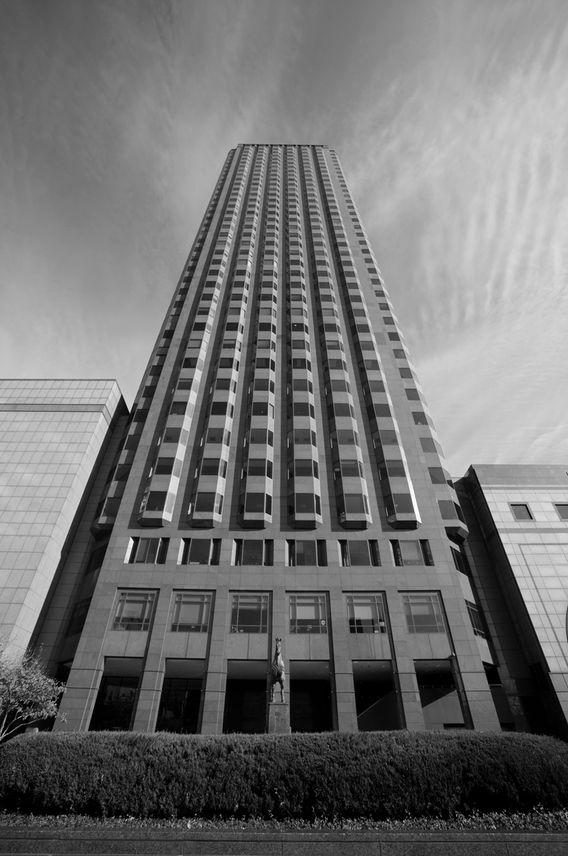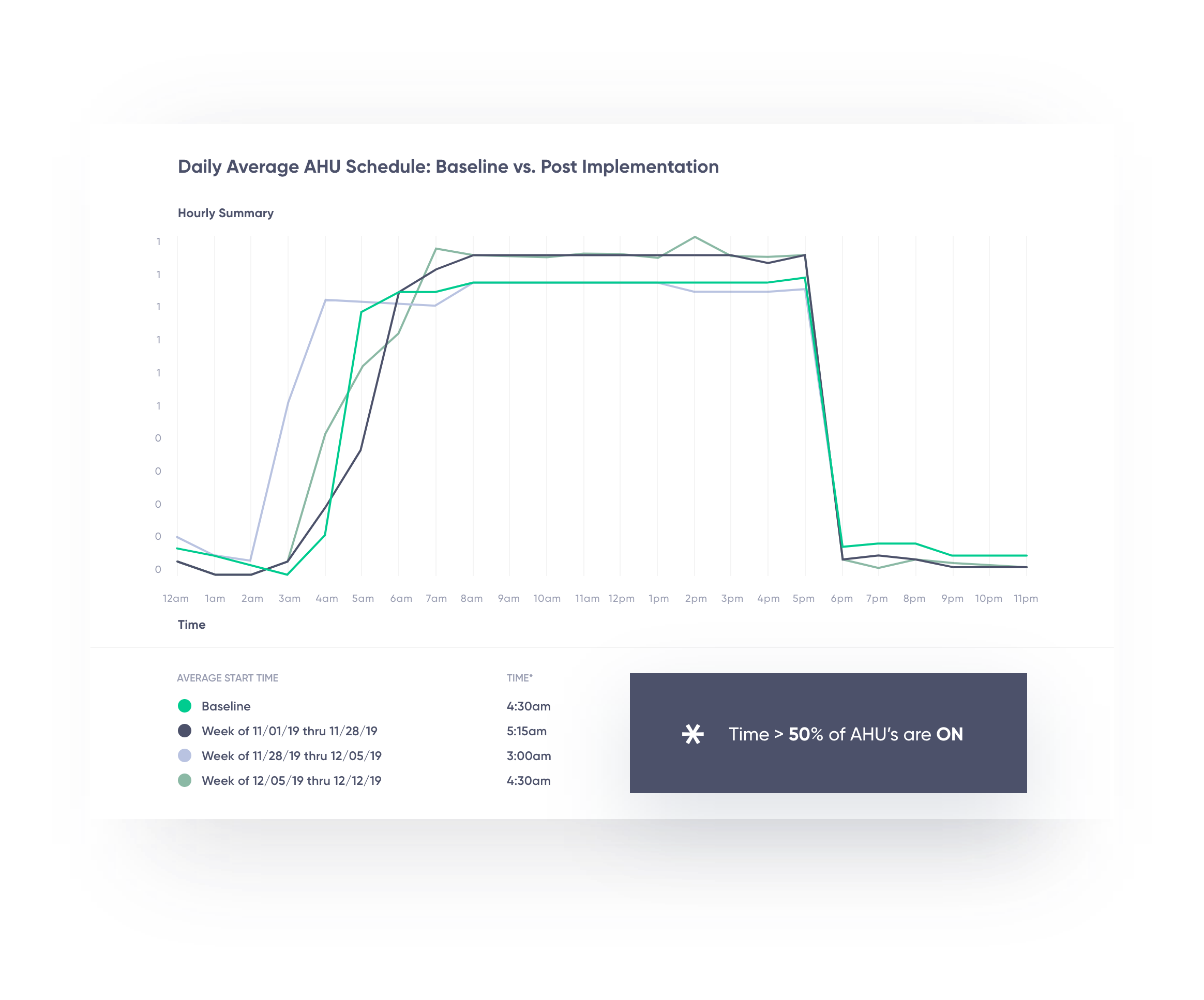
270
70°F
1.5 HOURS
14.3%
Even though the building implemented an Air Handling Unit optimized start algorithm, which uses machine learning to automatically “figure out” when to optimally turn the system on in the morning, the building engineer continued to manually override the sequence because he didn’t trust it would work in what he perceived as “extreme” weather scenarios.

270
70°F
1.5 HOURS
14.3%
Ongoing simulations revealed the building’s actual savings trajectory deviating from its predicted levels. Through notifications and dashboards, it was clear the building engineer was overriding the scheduled optimized start for his AHUs up to 3 to 4 hours before the programming would bring them on. Data analytics performed on the Bractlet Intelligence Platform verified that using the automated sequence would not sacrifice thermal comfort.

Through data analysis, further education, and quantification of the lost savings, the building engineer came to trust the automated programming. In addition, the Bractlet platform’s capabilities to detect and trigger notifications of thermal comfort issues allowed the building engineer to have confidence in building operations and ultimately run a more efficient building.
Having a dynamic simulation model normalized the effects of weather, occupancy, and changes to operations allowed for the building engineer and property manager to visualize and quantify the impact of the issue. Supplementary performance graphs and reporting generated in Bractlet’s software influenced decision-makers to reinforce leaning more heavily on automation.
1.5
DECREASED START TIME (HOURS)
270
NUMBER SPACES AT SETPOINT
14.3%
ENERGY SAVINGS
